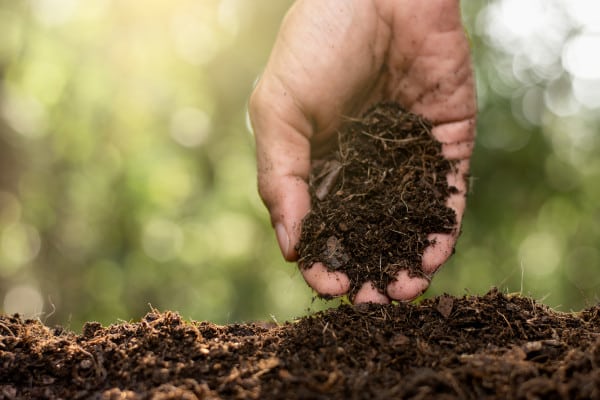Here I answer everything you need to know about composting with my compost FAQs!
1. How do I keep my compost bin dry?
If it looks wet, keep it covered from rain by using pieces of old carpet to cover. Add more dry materials to aerate such as straw, sawdust or shredded cardboard.

2. Why isn’t my compost biodegrading?
If it’s too woody and too coarse it might not break down as easily. Try adding more green materials, like grass clippings or veg peelings. You can also buy a compost activator to add in some more nitrogen, which will keep the micro-organisms active.

3. How can I deter pests?
You can ensure you don’t attract rats by avoiding adding slow-rotting and odorous foods like bread, meat and dairy products. Some heaps may attracts fruit flies, but you can get rid of them by covering it with a lid and burying any fruit and veg scraps, rather than just tipping them on top.

4. Why is it taking so long?
Your compost needs to build up heat to biodegrade, so for the fastest results, fill the entire compost bin at once. A large pile will speed things up because it has enough mass to generate heat, hot composters are also an option.

5. What’s the green/brown ratio?
Though this may vary from location to location and the weather you experience – as well as what you’re adding. Although, the general rule of thumb is 25-50% green material and 50-75% brown.

6. How will I know when it’s ready?
It can take anywhere from three months to a few years to be ready. So, the best way to tell your compost is ready to use is when it’s deep brown, crumbly and sweet-smelling. If it still smells rotten, it’s not ready.

7. Where’s the best position?
I position mine on soil so that the worms can come up from the ground and aid the process. It can be in sun or shade but bear in mind that the sun will keep temperatures high and therefore dry it out quicker.

8. Should I use it all at once?
Having the compost ready, means you can start to make use of it in your garden and you don’t want to waste it. With enough space, keep two bins together so you have one that’s ready to use and one to add new material to.

9. How do I solve draining issues?
Start by putting a 10cm layer of coarse material in the bottom of the container. This will help with air circulation and drainage. For instance, this can be things like twigs and woody prunings, straw, or scrunched up cardboard.

10. When should I add it to the garden?
Organic matter is best added in springtime, as this is just before growing season and microorganisms work quicker in the warmer weather. Adding about one inch of compost is enough to spread on your beds.


Great advice ,ready to start my compost bin